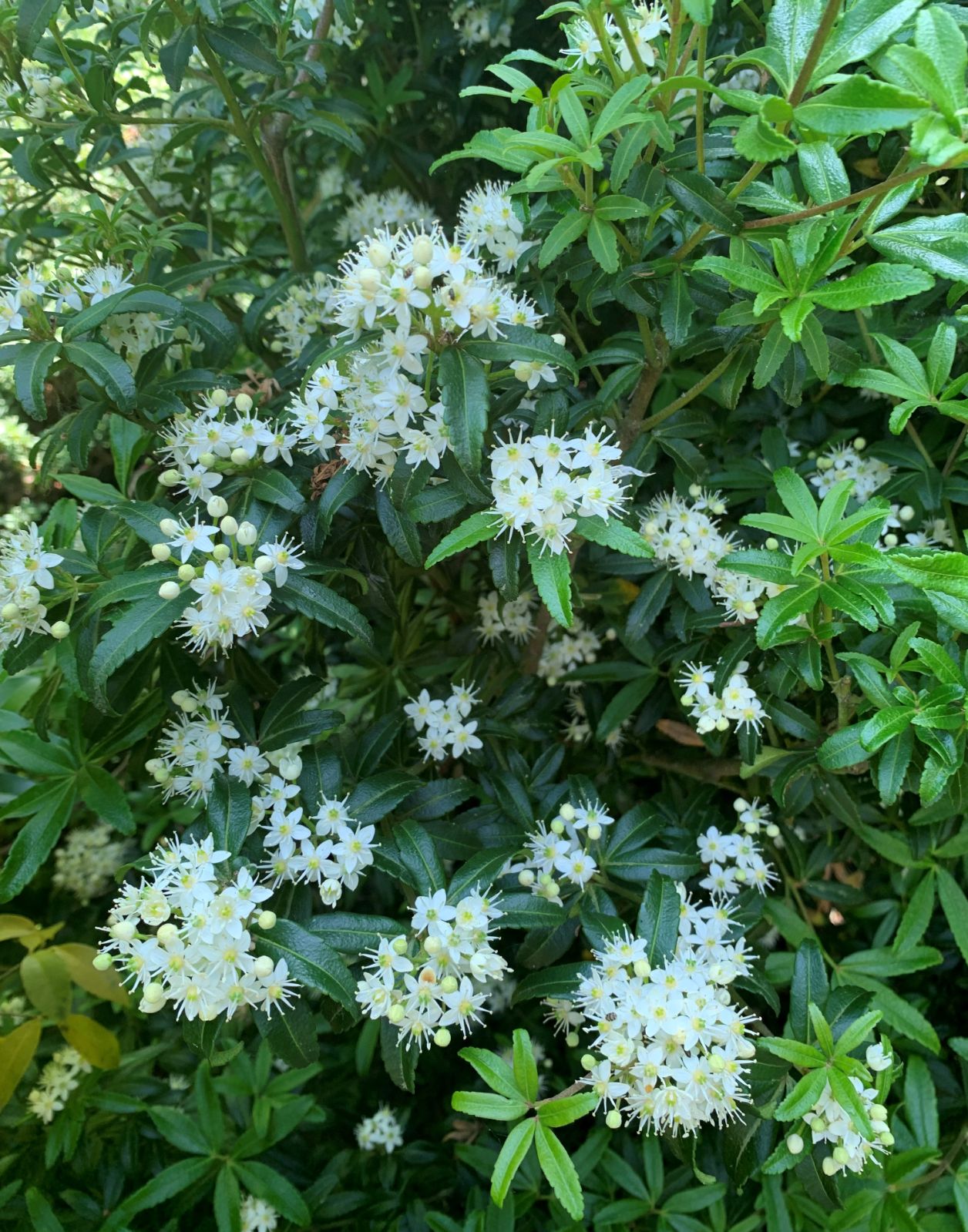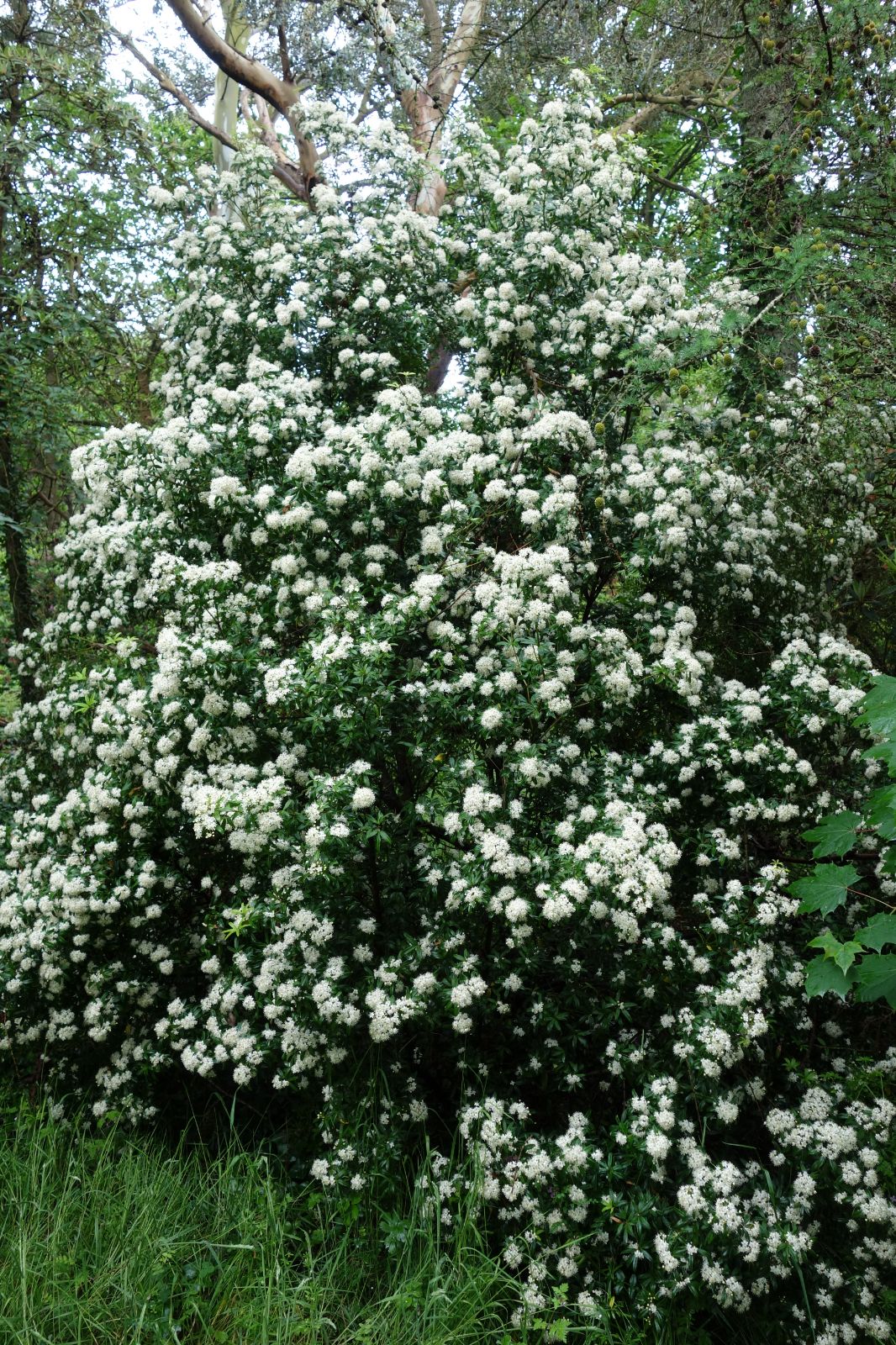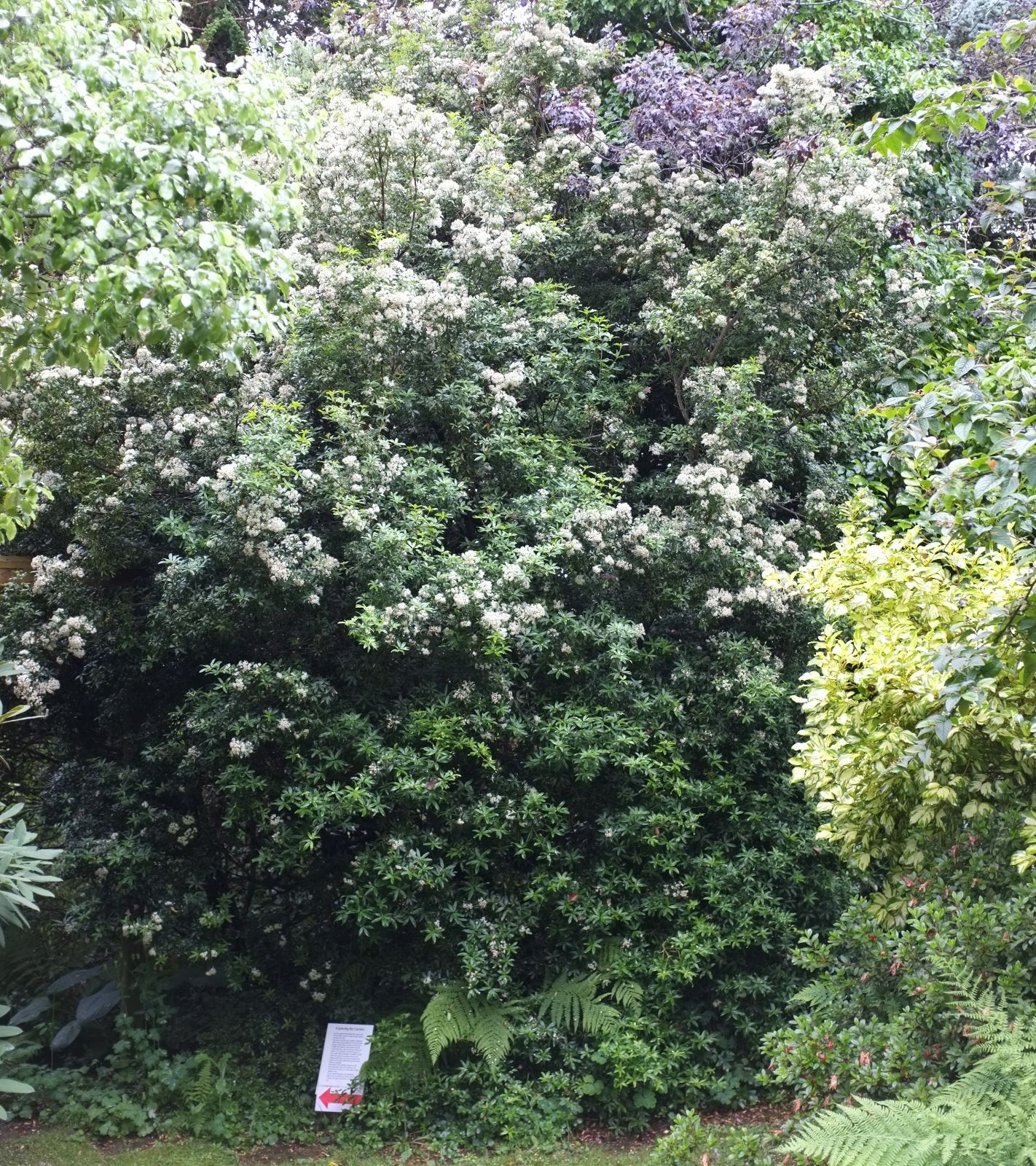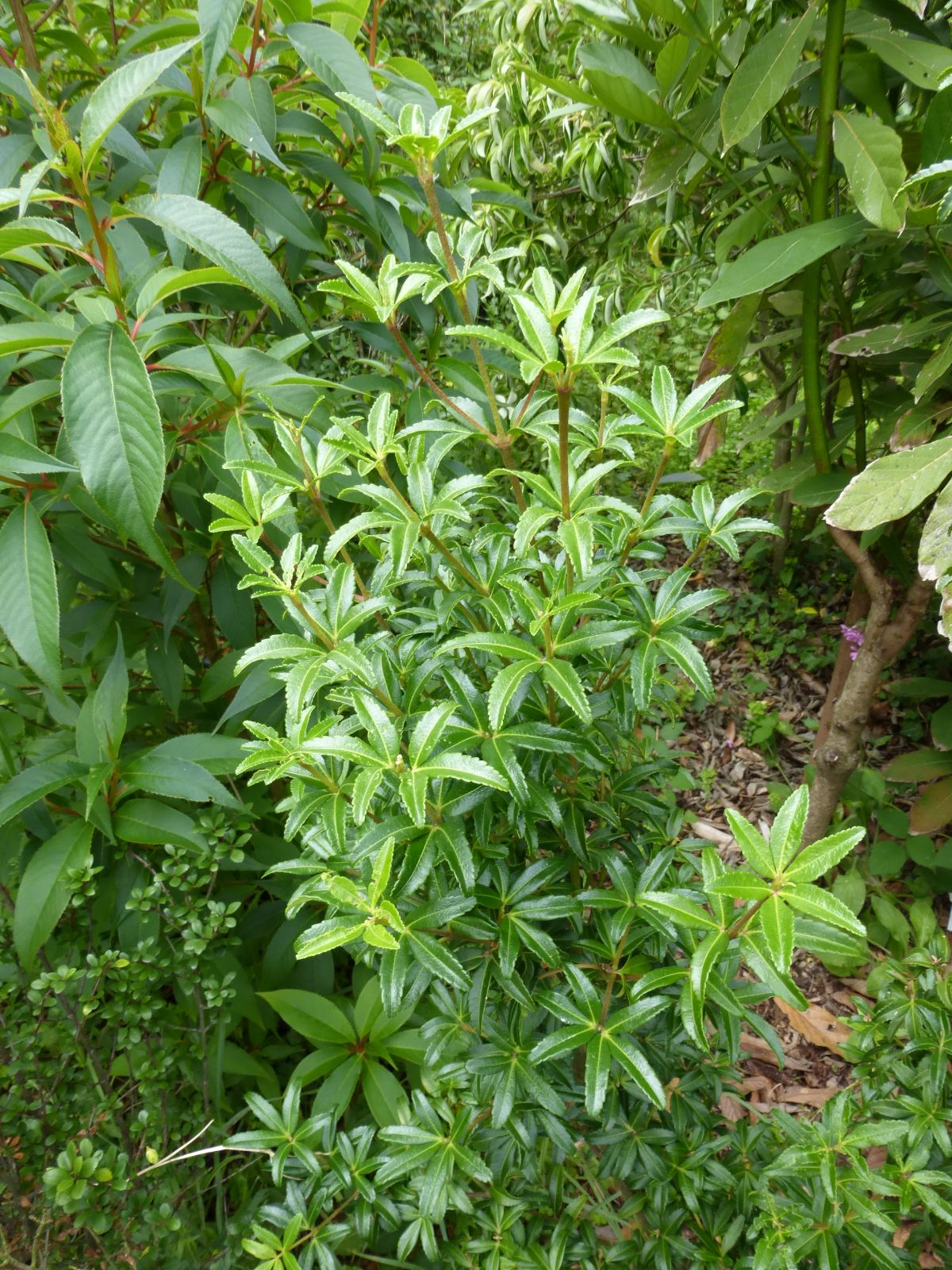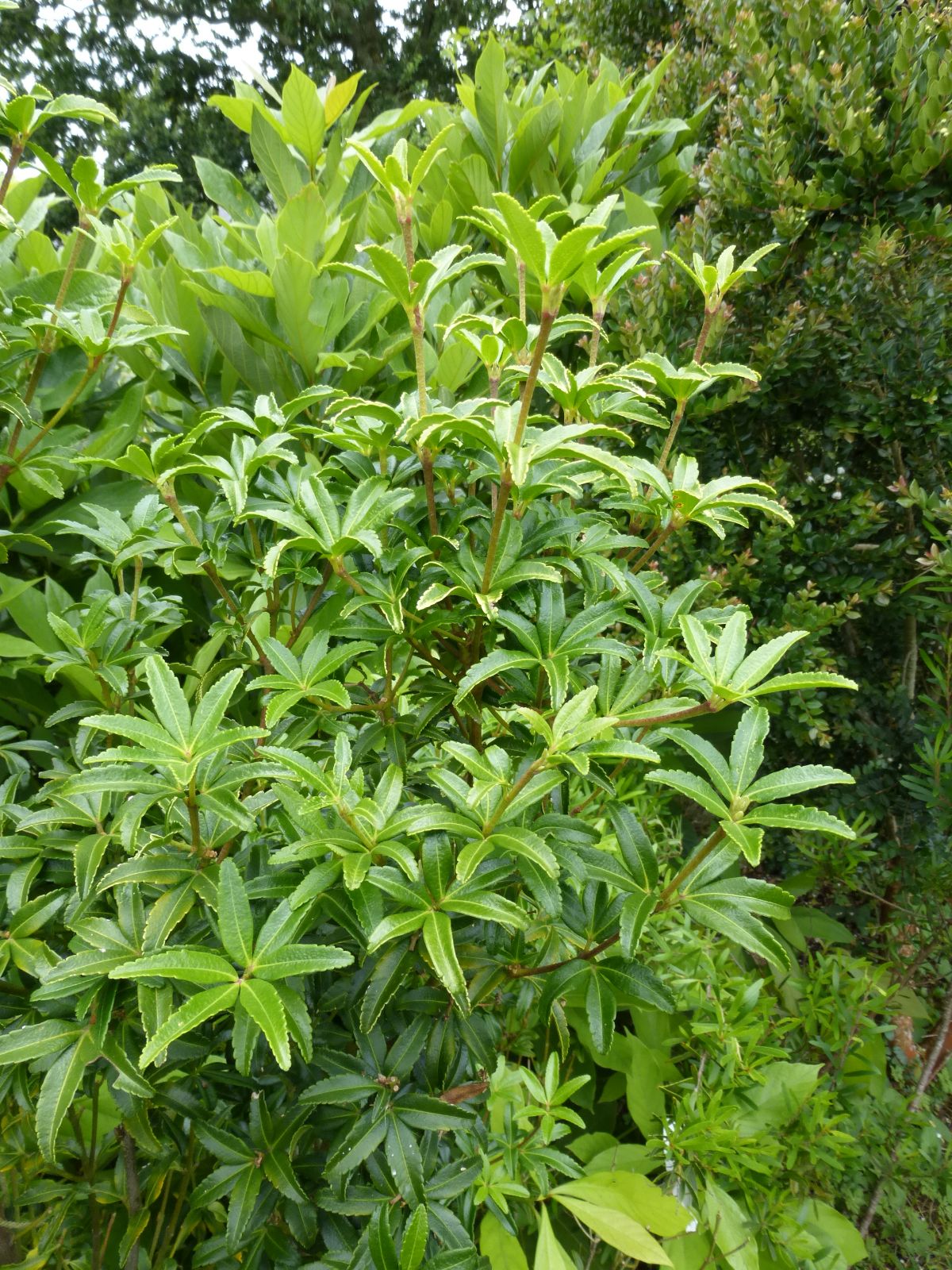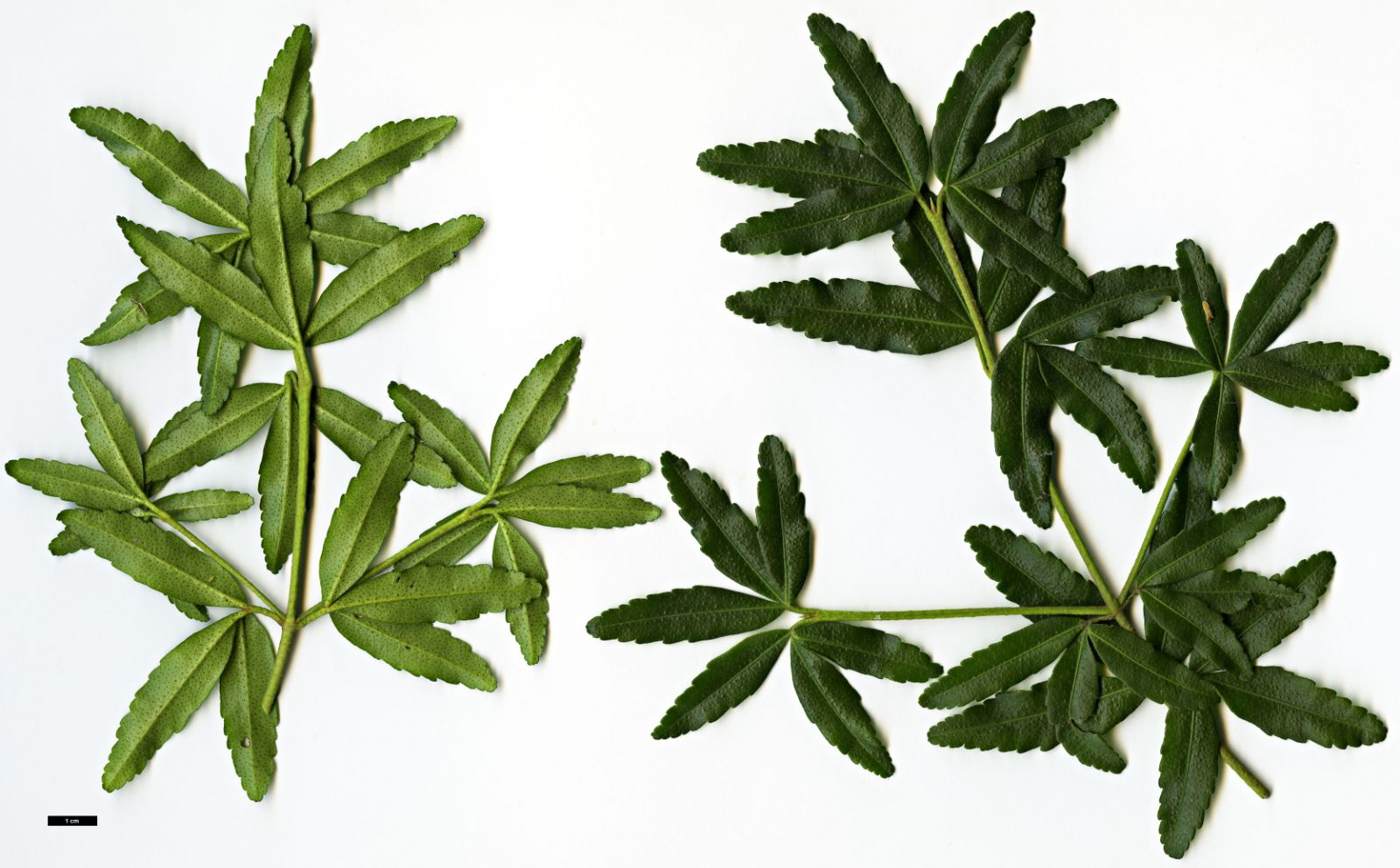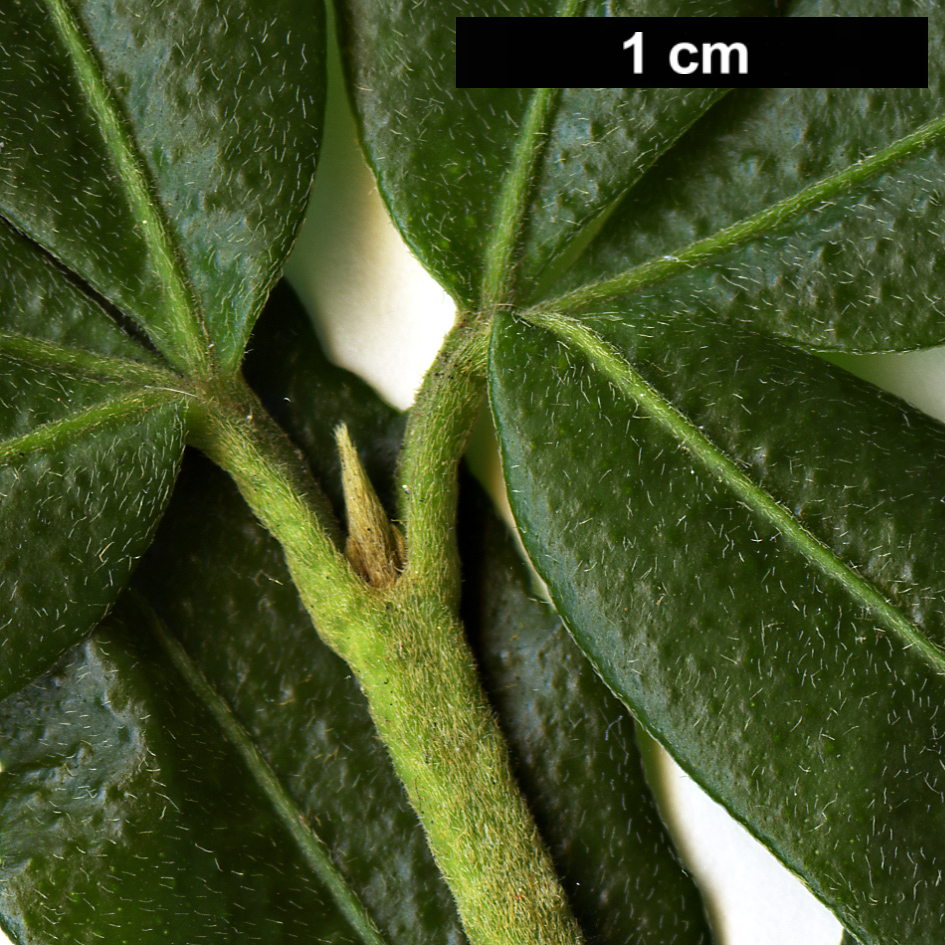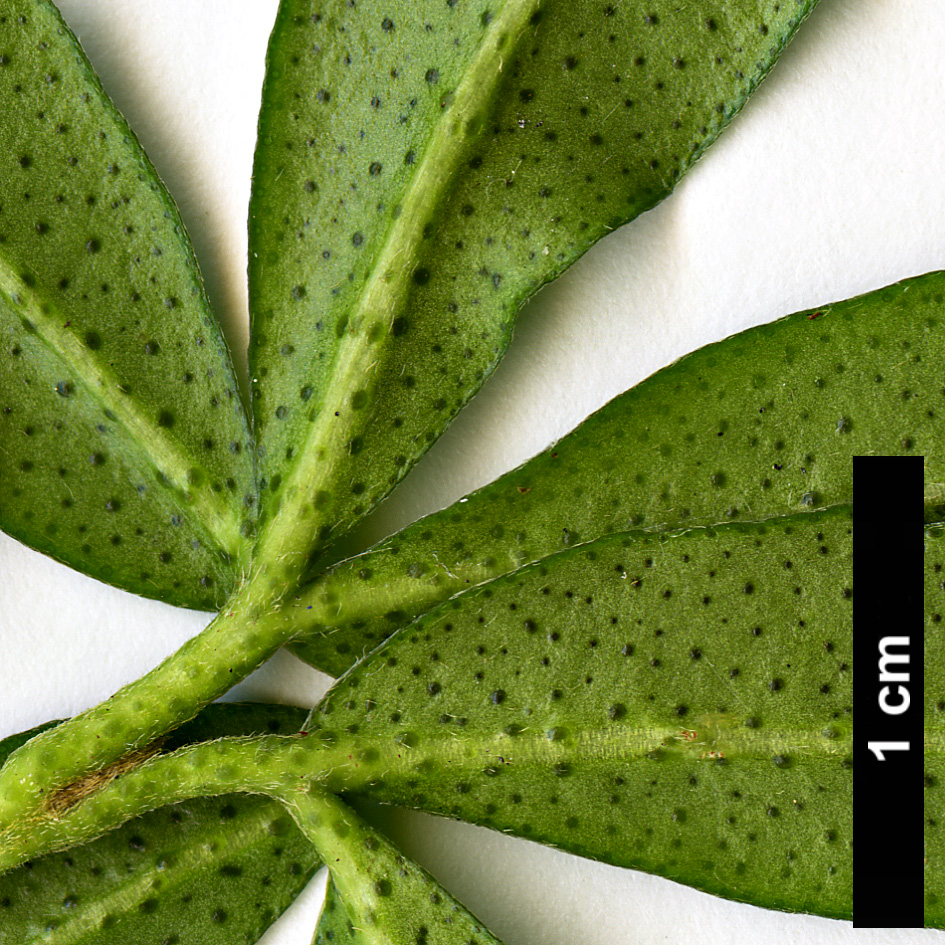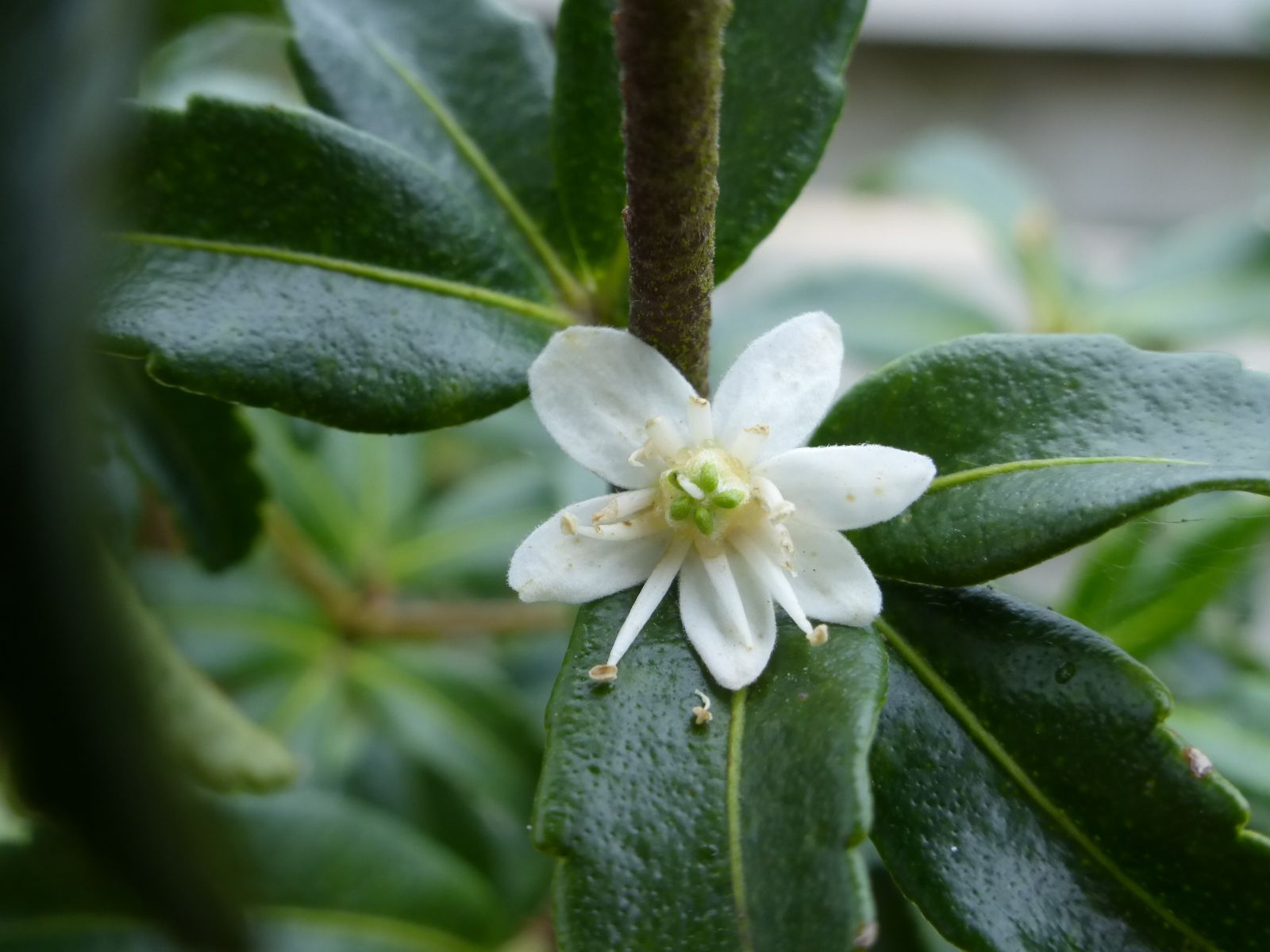Acradenia frankliniae
Credits
Article from Bean's Trees and Shrubs Hardy in the British Isles
Recommended citation
'Acradenia frankliniae' from the website Trees and Shrubs Online (treesandshrubsonline.
Genus
Other taxa in genus
An evergreen shrub of bushy rounded habit up to 10 or 12 ft high in a wild state, sometimes with the habit of a small tree; young shoots thickly covered with minute grey down. Leaves opposite, of stiffish texture, trifoliolate; main-stalk 1⁄8 to 1⁄3 in. long. The three leaflets are stalkless, oblong to narrowly oval, rounded and shallowly toothed at the apex, tapered and entire towards the base; 1 to 23⁄4 in. long, 3⁄8 to 5⁄8 in. wide; dark green and slightly downy above, quite glabrous and paler bright green beneath with dark oil-glands freely scattered over the surface. Flowers white, 3⁄8 to 1⁄2 in. wide, borne in May in terminal corymbose clusters 11⁄2 to 2 in. across. Petals five, ovate, downy; sepals five, downy, 1⁄12 in. long; stamens ten, glabrous; disk of ten glands, alternating with the stamens; ovary of five felted carpels united at the lower half, each with a gland at the top. Bot. Mag., t. 9187.
Native of W. Tasmania, where it was discovered by Dr Milligan on the banks of the Franklin River, near Macquarie Harbour, in April 1842. It has since been found on the Gordon and Pieman rivers, which are of the same drainage area. Introduced to Kew in 1845. It just misses being hardy there and is grown in the Temperate House, but thrived for many years on a wall at Wakehurst Place, Sussex. At Rowallane, Co. Down, there are two specimens against a north-west to south-west wall: one is a vigorous plant 11 ft high, which flowers well most years and was undamaged in the winter of 1962–3; another, in a draughty corner, was damaged in that winter but has since recovered.
The specific name commemorates Lady Franklin, whose husband, Sir John, was Governor of Tasmania in 1842. They were travelling with Dr Milligan when the shrub was first discovered. The leaves have a slightly acrid but not unpleasant odour when crushed.

